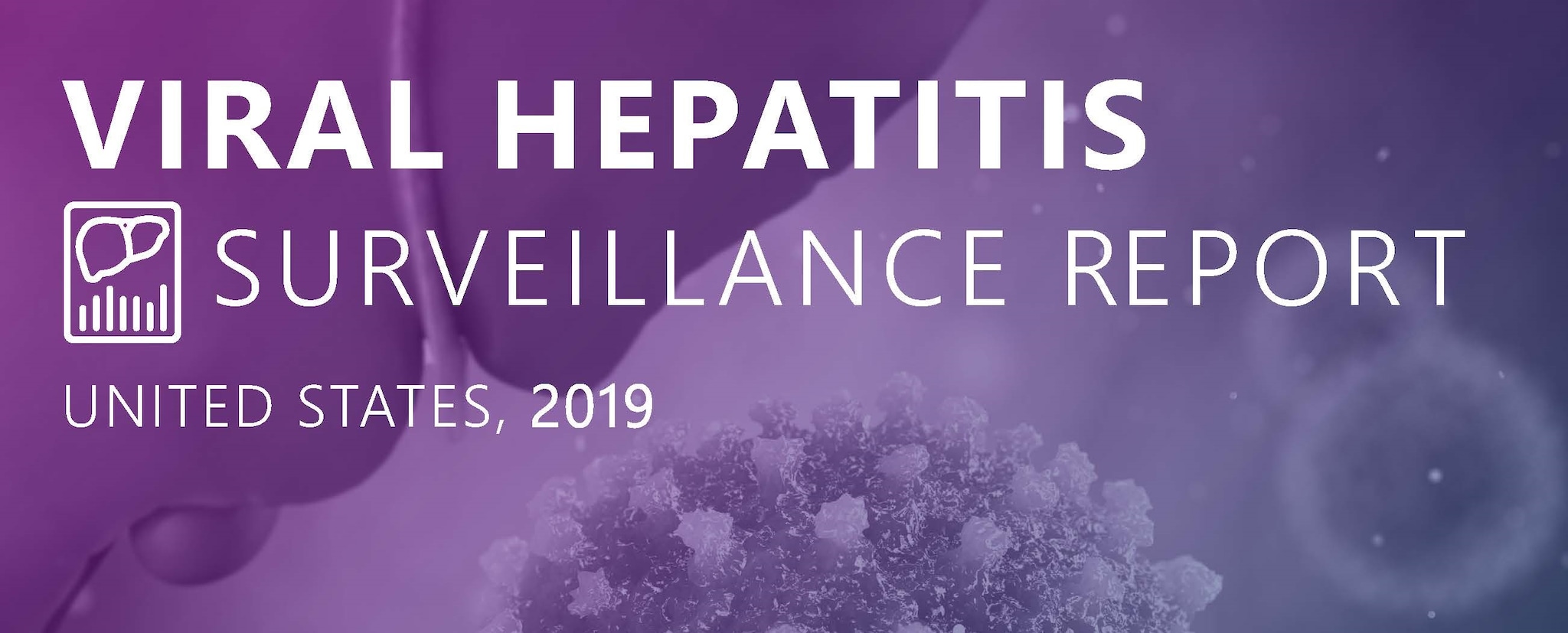Viral Hepatitis Surveillance 2019

2019 Viral Hepatitis Surveillance Report is published by the Division of Viral Hepatitis, National Center for HIV, Viral Hepatitis, STD, and TB Prevention, Centers for Disease Control and Prevention (CDC), U.S. Department of Health and Human Services, Atlanta, Georgia.
Data are presented for the cases of viral hepatitis infection from 1 January 2019 through 31 December 2019. All material contained in this report is in the public domain and may be used and reprinted without special permission; however, citation as to source is appreciated.
Centers for Disease Control and Prevention. Viral Hepatitis Surveillance 2019. Atlanta: U.S. Department of Health and Human Services; 2021.
Background
Hepatitis is an inflammation of the liver most often caused by a virus. In the US, the most common types of viral hepatitis are hepatitis A, B, and C. While each can produce similar symptoms, each hepatitis virus affects the liver differently, has different routes of transmission and infection, and typically affects different populations. Fortunately, effective vaccines are available to help prevent hepatitis A and hepatitis B. Although no vaccine is available for hepatitis C, life-saving treatment can cure the virus. Learn more about the different viral hepatitis types.
National Profile
The Centers for Disease Control and Prevention (CDC) collects, analyzes, and disseminates viral hepatitis surveillance data. Each week, staff at health departments submit case reports of viral hepatitis to CDC through the National Notifiable Diseases Surveillance System (NNDSS). The annual surveillance report, published by the Division of Viral Hepatitis, summarizes information about reported cases of hepatitis A, hepatitis B, and hepatitis C and deaths with any of these hepatitides listed as a cause of death in CDC’s National Vital Statistics System (NVSS).
Technical Notes
Case ascertainment and case reporting
For health department staff to report cases of viral hepatitis to CDC, they must have systems and processes in place that ensure each case is detected. Because of varying state laws, resources, and infrastructure, not all health departments report all cases of acute or chronic viral hepatitis to CDC.
Summary
This section provides a graphical representation of acute viral hepatitis cases reported in 2019.
Supplemental Report (May 2021)
Perinatal Hepatitis B Prevention Program Data
Outcome data on infants born to persons with hepatitis B virus infection are reported by the CDC Perinatal Hepatitis B Prevention Program (PHBPP), which funds 64 jurisdictions to identify pregnant persons infected with hepatitis B virus and to case-manage their infants to improve receipt of post-exposure prophylaxis…
Perinatal Hepatitis B Prevention Program Data
Outcome data on infants born to persons with hepatitis B virus infection are reported by the CDC Perinatal Hepatitis B Prevention Program (PHBPP), which funds 64 jurisdictions to identify pregnant persons infected with hepatitis B virus and to case-manage their infants to improve receipt of post-exposure prophylaxis…
Learn MoreSuggested Citation
https://www.cdc.gov/hepatitis/statistics/SurveillanceRpts.htm. Published July 2021. Accessed [date].


